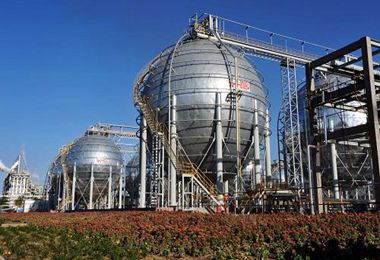Author: Mr. Sun Nan
Biochemical industry, as an important component of new quality productivity, has attracted attention from both policy and industry sectors. Driven by the "14th Five-Year Plan" policies of the Chinese government, China's bio-based chemical industry has developed rapidly, with some products having reached a certain scale.
I. Biochemical Industry is an Important Component of New Quality Productivity and a Lever for the Transformation and Upgrading of the Chemical Industry
China has introduced a series of policies related to bio-based materials to promote industrial development. During the "12th Five-Year Plan" period, biochemical industry was in a stage of rapid development, but its standardization and industrialization had not yet been formed. During the "13th Five-Year Plan" period, the focus of government policy shifted to enhancing product competitiveness, achieving industrial synergy and scaling, and creating demonstration projects. During the "14th Five-Year Plan" period, under the context of "dual carbon," government policy focus has been shifted to biotechnological innovation, strengthening the coupling of biotechnology and chemical engineering, and promoting the application of bio-based products to foster the healthy development of the bio-based industry. As of 2023, some bio-based chemicals such as ethanol, lactic acid, and 1,3-propanediol have been commercialized, while acrylic acid and para-xylene are still in the early stages of research, and furfural and xylitol have formed unique industrial systems.
II. Current Status of the Bio-based Chemical Industry Chain
(1) Industrial Chain Structure
The global bio-based chemical industry has formed a structure different from the traditional chemical industry chain, whose upstream mainly consists of agriculture and agricultural product processing industries, and its midstream includes different types of enterprises based on different technological routes, and its downstream includes specialized bio-based chemical enterprises, traditional chemical enterprises under transformation, and other transformation enterprises.
(2) Types of Enterprises
Product-oriented Enterprises: These extend the industrial chain based on their main products, such as Gevo, which focuses on the layout of bio-based energy products. Gevo's two core technologies are Gevo's Integrated Fermentation Technology (GIFT) and alcohol to Jet (AtJ) technology for Sustainable Aviation Fuel (SAF) production. GIFT is a platform for efficient production and separation of bio-based chemicals. Gevo has announced that he will vigorously develop SAF as the company's core business in the future. Currently, Gevo is investing $850 million in the construction of the NZ1 (Net Zero 1) project, with a planned total capacity of 62 million gallons/year, including 55 million gallons/year of SAF products. In terms of SAF applications, many airlines in North America have signed cooperation agreements with Gevo, including American Airlines, Delta Airlines, and other top airlines in the North American region. Currently, the combined SAF order volume of American Airlines and Delta Airlines accounts for 55% of Gevo's total signed orders.
Platform-oriented Enterprises: Companies which focus on technological research and development, and whose profit is sourced from platform services. Ginkgo Bioworks, a platform-oriented enterprise, builds a technological platform and provides customized engineered cell services to its customers. Ginkgo Bioworks' bio-manufacturing platform includes two major technological platforms, "Codebase" and "Foundry." "Codebase" is responsible for designing, encoding, and correcting a variety of cell programming, i.e., strain design, and currently, Codebase can design 50,000 different genetically modified cells in a day. "Foundry" is a cell factory that produces target microbial cells according to the design, and the "Foundry" platform can automatically conduct biological experiments and increase the yield of non-natural metabolic products by modifying cellular metabolic pathways. To be specific, the production process is shown below:
- firstly, selecting a host (such as coliform) and placing the computer-designed DNA into the host for modification
- then, allowing the host to produce the required products according to the developed cell culture system
Large Chemical Enterprise Transformation: Focusing on the biomass transformation of existing products and the green upgrade of production processes, such as BASF's layout of Biomass-Balanced Products (BMB products). From technical perspective, BMB products do not change the original production process and only use biomass to replace raw materials, with a high degree of technical maturity and good downstream compatibility; BMB products are cutting-edge applications of biotechnology, with high technical barriers for chemical enterprises but enjoying great development potential. Therefore, BASF has been adopting strategies such as establishing cooperation with related enterprises or directly acquiring to enhance its capabilities in DNA sequencing, gene editing and design, development, and transformation of biological systems. The cutting-edge technologies enable BASF's continuous green transformation from the near to the long term.
Other Enterprises’ Transformation: Utilizing the advantages of synthetic biology and fermentation engineering to extend the industrial chain, such as AHB's (Huaheng Biotech) expansion into the bio-based chemical field. AHB, based on its own technical characteristics and downstream market demand, has chosen succinic acid and PDO as the first batch of bio-based chemicals for layout. From the perspective of its own technology and industrial chain, the raw material of bio-based succinic acid and PDO products can be produced using the same starch and glucose through the microbial fermentation process as AHB's existing amino acid products, which can quickly open up the entire production process. Secondly, the technology for producing succinic acid products by biological fermentation is similar to AHB's existing production technology for L-alanine and L-valine. AHB has a deep accumulation in the fields of industrial strain creation, intelligent control of fermentation processes, efficient post-extraction, and product application development, which can provide more support for the industrialization of the biological process of succinic acid and PDO.
III. Prospects of Bio-based Chemicals
(1) The supply and utilization of raw materials need to be transformed urgently
To solve the "competition with people for food" issue, relevant enterprises and research institutions are working from the perspectives of enriching raw material sources and improving utilization efficiency, exploring the transformation of raw materials, including non-grain biomass waste, non-grain crops, landfill gas, and traditional fossil materials.
(2) Efficient and green development of production technology
With the advancement of synthetic biology technology and the approaching goal of "carbon neutrality", the use of green and low-carbon technologies to produce bio based chemical products has become more and more important. However, the bio based chemical industry is still in its early stages of development, and the maturity of production technology needs to be continuously improved.
IV. Summary and Outlook
Biochemical industry is an important component of the bio-economy and new quality productivity. Future related policies will be further improved. Global biotechnology and chemical enterprises can be divided into four major types. Product-oriented enterprises are the current mainstream; platform-oriented enterprises are expected to be mainly distributed in regions such as the United States; Large chemical enterprise transformation is accelerating; and other enterprises ’transformations will be dependent on their technical and production advantages. The commonality among various enterprises is the rapid construction of R&D capabilities and the extension of the industrial chain based on their advantages. Enterprises planning to enter the industry should leverage their own advantages, quickly build R&D capabilities through mergers and acquisitions or cooperation, and seize the development opportunities.











